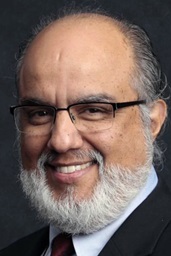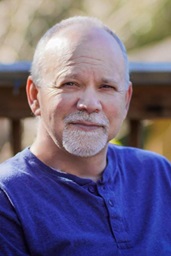
The Rev. William B. Lawrence
Photo by H. Jackson/Southern Methodist University.
Photo by H. Jackson/Southern Methodist University.
The first reports of a mysterious illness in China were published in early January. Also in January, United Methodist News and major secular news media — including CNN, NPR, The Washington Post and The New York Times — had reported that an agreement had been reached to split The United Methodist Church. The reports said that a compromise “protocol” would create at least two separate denominations and end a dispute over homosexuality that has bedeviled United Methodism for decades.
The breaking news seemed definitive.
But, so far, no such schism has happened. And it is not clear whether anything of that sort will happen soon. The only changes most United Methodists have seen since the release of the protocol on Jan. 3 have involved suspending the passing of the peace, altering how we handle communion elements, meeting and worshipping online and canceling services completely. These are consequences of COVID-19, not decisions about the destiny of the denomination.
Furthermore, the protocol is actually just a proposal to the General Conference, the denomination’s global legislative assembly, which is now rescheduled it for Aug. 29-Sept. 7, 2021. It is only one of several proposals for schism that have been submitted. The Commission on the General Conference right now seems confused about whether it can decide if additional legislative proposals may be submitted for consideration, even though current church law in Paragraph 507 of the Discipline clearly says any individual or organization may do so.
There are hopes that the delegates will approve some plan. Yet each proposal has elements that the General Conference on its own may not have the authority to decide.
Commentaries
UM News publishes various commentaries about issues in the denomination. The opinion pieces reflect a variety of viewpoints and are the opinions of the writers, not the UM News staff.
We might want the General Conference to enact a plan for separating the church. But it has only some forms of authority under the terms of the constitution. It cannot act beyond the limits established in the constitution.
On March 11, the Council of Bishops asked the Judicial Council to rule whether the proposed protocol legislation is constitutional. The bishops are asking the Judicial Council to declare whether anything in 33 pages of proposed protocol legislation lies outside the limits of General Conference authority. Of course, the spring Judicial Council meeting was canceled because of COVID-19. It is unclear when the Judicial Council might rule on the bishops’ request.
When the founders of The United Methodist Church were working on plans that led in 1968 to the merger of the Evangelical United Brethren and Methodist churches, they chose to connect all the parts of the church through a constitution that established a governing network.
This constitutional approach, begun by Methodists in 1808, assigns authority in a connectional manner. From its local churches to its global assemblies, The United Methodist Church is a connection of entities, each of which has powers established by the constitution.
It is not a loose confederacy of congregations and clergy. Nor is it a pyramid controlled at its peak by some central board or chief executive.
Different units of the church have final authority for specific aspects of its life.
A bishop decides where clergy will be appointed, but a bishop has no vote in choosing the clergy that are eligible for an appointment. The General Conference can set the procedures for a church trial of a clergy member, but it cannot do anything that would deprive the clergy of the right to a trial and to an appeal.
The proposed protocol legislation, for example, would allow a central conference in a region outside of the United States to remove all the annual conferences and all the local churches in its region from any connection to The United Methodist Church.
If the Judicial Council does what the bishops have asked, it will have to determine whether the constitution allows a simple majority of General Conference delegates to permit a two-thirds majority of central conference delegates to take all of those annual conferences and local churches out of the denomination.
Some of the proposals for dividing the denomination that were previously submitted recognize that their plans have no basis in the constitution. So they include recommendations for constitutional changes or amendments.
The Connectional Table, for instance, seeks to create a new layer of governance in a regional conference in the United States, with authority to set church policies and write church laws that would only apply to United Methodist annual, jurisdictional and local church conferences in the United States. It would require amending the constitution in order to establish the regional conference and specify its authority.
UMCNext has recommended writing a new constitution. It proposes to create a Commission on the 21st Century Church, which would present a draft constitution at a special session of the General Conference in 2023. If approved, it would go to annual conferences for a final vote.
UM-Forward has proposed that The United Methodist Church cease to exist. It would dissolve the denomination and create four new denominations that take differing positions on full inclusion of LGBTQ+ persons. But the General Conference has no constitutional authority to make the denomination dissolve or disappear.
The Indianapolis Plan would not dissolve the denomination but would divide it into three separate entities. It envisions one of the three as a continuation of The United Methodist Church. The other two would be characterized by their positions on the full inclusion of LGBTQ+ persons. Like the protocol, however, this plan relies on claiming constitutional authority for letting a simple majority of General Conference delegates give a designated majority of central conference delegates the power to remove its annual conferences and their local churches from the United Methodist connection.
Multiple proposals — including but not limited to the Indianapolis Plan and the protocol — claim that an annual conference has the authority to vote to leave The United Methodist Church. Indeed, the protocol mentions a Judicial Council decision that says annual conferences have a right, under the constitution, to do so.
There are at least two immensely important and difficult issues with this.
One is the Judicial Council ruling on which the protocol relies. It is unidentified but is almost certainly Decision 1366, in which the Judicial Council addressed specific pieces of proposed legislation prior to the special session of the General Conference in 2019. Petition 90041, which the Judicial Council considered partly constitutional as it existed before the General Conference met in 2019, was defeated in the legislative process. It never was enacted into church law. Since it does not exist, it cannot be constitutional.
Second is the part of the protocol involving an annual conference vote to depart from The United Methodist Church. When persons are elected to clergy membership by an annual conference, they have the right to a trial and to an appeal. To be specific, the constitution says that the General Conference “shall not do away with the privileges of our clergy of right to a trial by a committee and of an appeal.”
So the General Conference does not have any constitutional power to authorize the removal of a clergy member from The United Methodist Church. Such a legislative act would do away with the clergy member’s constitutional right to a trial and an appeal, and the constitution says the General Conference “shall not” do that. The only way for the General Conference to acquire such power would require amending the constitution and removing the right of each clergy member to a trial and an appeal.
These are very confusing matters to be sure. Whenever the critical condition of the world’s public health permits these proposals to be considered, the terms of a schism or separation should not create greater confusion or provoke yet another crisis.
Lawrence is an ordained elder of The United Methodist Church, former dean of Perkins School of Theology at Southern Methodist University and former president of the Judicial Council.
News media contact: Vicki Brown at (615) 742-5470 or [email protected]. To read more United Methodist news, subscribe to the free Daily or Weekly Digests.
Like what you're reading? Support the ministry of UM News! Your support ensures the latest denominational news, dynamic stories and informative articles will continue to connect our global community. Make a tax-deductible donation at ResourceUMC.org/GiveUMCom.



